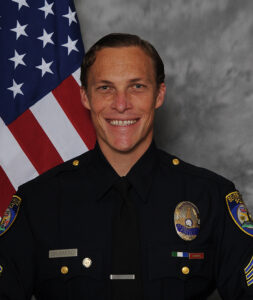By Hannah Green
Students and educators across the United States are leading a movement to stop school violence. This comes at a time when mass casualty attacks are occurring at schools around the country. Indeed, some 210,000 students have been exposed to school gun violence since the Columbine shooting in 1999, according to a Washington Post investigation.
Here at the Sol Price School of Public Policy, the Safe Communities Institute (SCI) is rallying experts, students and educators from around the country who want to protect our schools. On October 24, 2018, during Safe Schools Week, SCI will host experts and relevant stakeholders for the USC National Safe Schools Summit.
SCI’s primary mission is violence prevention, and protecting schools and educational institutions is at the heart of that mission. SCI Director Dr. Erroll Southers leads an assembly of scholars, researchers and safety and security professionals to advance the tools and policies that can better protect our schools and our children.
With this information, the assessment tool helps safety and security professionals create a larger emergency preparedness and response plan, which aims to protect the school from hazards including and beyond violence.

What Makes a School Safe?
Since the 1990s, Southers has worked with public and private schools, including K-12 and higher educational institutions, to develop safety plans. In this work, Dr. Southers uses a School Security Vulnerability Assessment tool to review existing policies and procedures and mine information from students, teachers, other employees and first responders. This can help reveal:
- Factors that invite potential hostility
- Institutional vulnerabilities
- Warning signs
- Partnerships that offer safety and security risk reduction opportunities
Successful, comprehensive security plans take into account the vulnerabilities unique to each school. By speaking to people with firsthand knowledge of the schools concerned, assessors can stay one step ahead of anyone who might be planning to cause harm to the school community.
“School shooters don’t do random,” Southers says. “They know the location they’re going into, they know the security procedures that are in place, and they know the access control measures that have been implemented. It’s not like they’re guessing on which door to walk in and when to do it. They know when to do it and where.”
A key feature that safe schools share is a community commitment to understanding and following security procedures. That doesn’t just include students and teachers; it also includes parents, employees, campus visitors, and first responders. More than any technology, Southers relies on a system of human awareness and communication to advance school safety.
“Make sure that those responsible for rendering assistance know your school,” says Southers. “I used to be on SWAT, and it’s one thing to see a location on a blueprint and another to walk through a location in person. I used to have SWAT teams walk through a school so they would see it and know it. An engaged and informed community is best able to identify emerging threats and notify law enforcement and other stakeholders. A community knows its challenges and needs better than anyone.”

A National Response to a National Challenge
Southers’ experience makes SCI a valuable ally in the effort to enhance school safety. Before the Columbine tragedy pointed national attention toward the problem, Southers was already developing strategies to prevent school violence, informed by a career spent in public safety. As well as serving for 7 years on the Santa Monica Police Force, Southers also served as: California Governor Arnold Schwarzenegger’s Deputy Director in the California Office of Homeland Security; an FBI Special Agent and SWAT Team member; Chief of Homeland Security and Intelligence for the Los Angeles World Airports Police Department; and President Barack Obama’s first nominee for Assistant Secretary of the Transportation Security Administration.

At USC, as well as his professorial duties and leadership of SCI, Southers also serves as the director of Homegrown Violent Extremism Studies and Director of International Programs for the Department of Homeland Security National Center for Risk and Economic Analysis of Terrorism Events (CREATE). Under Southers’ stewardship, SCI boasts experts who go above and beyond to ensure the best security possible for schools.
Importantly, while Southers is a consummate safety and security professional, he is in part motivated by the human impact these issues have on students, families, and teachers every day.
“I am a parent of a daughter who’s in high school,” he says. “I have been a professor for 15 years, so I’m in that environment teaching. My wife has been an LA unified educator for 20 years. My parents were both retired public school educators. In short, my family and I have long had a personal stake in this issue.”
In the future, SCI hopes to see more resources allocated to address challenges ensuring school safety. While tremendous resources have been allotted to U.S. critical infrastructure (e.g., power plants, dams and historic sights), those resources are not available to schools. And as one consequence, some schools don’t perform safety assessments for fear they will not be able to afford safety upgrades, according to U.S. News & World Report.
These and other factors impact how we as a country protect our children and those who teach them. Now that this issue is on the national agenda, schools may finally find the resources they need to enhance safety. The Safe Communities Institute is ready to help lead the way.
This article was originally published by the USC Price School of Public Policy.




